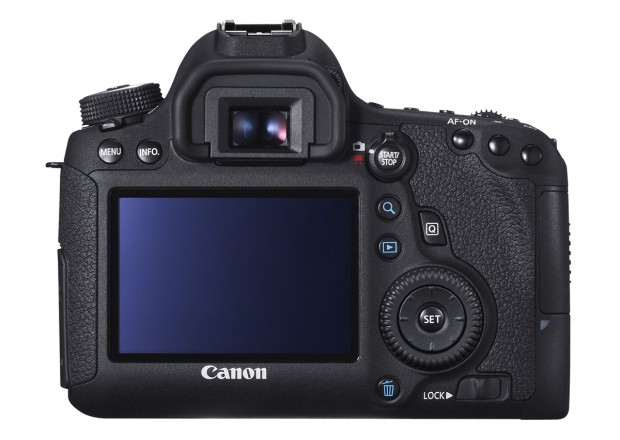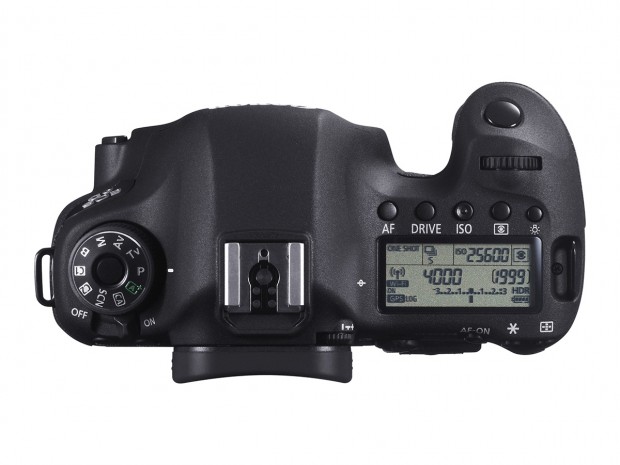Review Canon EOS 6D DSLR Camera Introduction:
It seems our exploratory swim in the waters of full-frame DSLRs is far from complete. With the ink from his recent reviews of the D600 and the mirrorless Panasonic GH3 still drying, I asked my homie Ben Pitt to put the Canon EOS 6D between his microscope plates and share his findings here. As you’d expect with a lower-priced semi-pro camera, the EOS 6D is a mixed-bag. It’s light and boasts integrated GPS + Wi-Fi, but a couple notable omissions are enough to yank this camera from the “obvious choice” list. Scrutinizing consumers have come to expect a catch with the $2,000 price point products. Does the EOS 6D have a big one?
Canon EOS 6D DSLR Camera Features:
There are no nasty surprises regarding image quality. The 6D’s 20-megapixel full-frame sensor is new, but quality is hard to distinguish from the EOS 5D Mark III’s 22.3-megapixel output. Details are marginally lower, but so too are noise levels. Incidentally, detail and noise levels are very similar to the Canon EOS 6D Charger, too. Canon and Nikon each has its distinctive colour processing but there’s nothing much to separate these three cameras’ image quality on an objective basis.

Their video modes are more varied. The 6D’s videos lag a little behind the D600′s for detail levels, and it lacks a headphone out to monitor the microphone input. However, unlike the D600, its aperture setting can be adjusted while recording. Overall, I’d class that as a draw, but both come a distant second to the Panasonic GH3 for video.
As with the D600, the 6D takes its design cues from a cropped-sensor sibling – in this case, the EOS 60D. The 6D is only fractionally larger and heavier than the 60D, although the lack of an integrated flash and articulated screen possibly account for the minimal weight gain. The layout of buttons is very similar, with a generous number of single-function buttons but a few less than on the 5D Mark III. It’s great to have the AF-ON button included – something Nikon chose to omit from the D600. The lack of direct access to white balance settings is disappointing, though.
Some people will lament the single SDXC slot, which compares unfavourably to the D600’s dual SDXC and the 5D Mark III’s SDXC and CompactFlash slots. I can live with a single slot, but it seems that this particular one hampers performance. Testing with an SDHC card rated at 94MB/s, burst mode set off at 4.2fps but slowed to 2.3fps after 26 frames. When I tested the 5D Mark III, I found that the 6fps burst rate lasted indefinitely with a 90MB/s CompactFlash card but slowed to 2fps after 28 shots with a 94MB/s SDHC card.
Still, 4.2fps for 26 frames isn’t so bad. If you’re looking for a fast camera for sports or wildlife photography, you should be more wary of the 6D’s autofocus sensor.
As with the Canon EOS 6D Battery Charger, its points are bunched towards the centre of the frame – it’s as if Canon has taken an APS-C SLR’s autofocus sensor and plonked it into a full-frame camera. But whereas the D600 has 39 AF points, nine of which are cross-type, the 6D has a much simpler 11-point autofocus with just a single cross-type point in the centre. That rules out the automatic subject tracking that’s available in the D600 and 5D Mark III – there simply aren’t enough AF points to track moving subjects. It’s also a pretty big drawback for portrait work, where you want to be able to focus on the eye without having to focus and recompose the shot. Then again, the 5D Mark II had a nine-point autofocus system, and it sold by the bucket load.
So far, the D600 is coming out on top for features, but the 6D’s trump card is integrated Wi-Fi and GPS. GPS worked without a hitch in my tests. The GPS radio stays on when the camera is switched off, so it needn’t spend ages recalculating its position when you want to take a photo. An icon on the passive LCD screen reminds you to switch it off at the end of the day – shame there’s no hardware switch.
The Wi-Fi implementation is one of the most sophisticated I’ve seen. With the help of the Canon EOS 6D Camera Charger Remote app for iOS and Android, the camera can be remotely controlled from a smartphone or tablet, complete with live view, touchscreen control over the autofocus point and full access to exposure settings. Image browsing is well catered for too, with responsive full-screen previews, detailed EXIF data and the ability to apply star ratings. There’s no option to transfer photos to the app at the full 20-megapixel resolution, though.
The 6D also supports wireless tethering to a PC or Mac, which worked flawlessly once I’d jumped through various hoops to set it up. There are various other features, such as uploads to Facebook and YouTube over a local network and the ability to stream slideshows to a Smart TV via DLNA.
Overall, the EOS 6D is a heady mix. Image quality is outstanding. Video capture has its limitations but picture quality is certainly flattering. Its controls and performance are decent enough, the autofocus is disappointing and the wireless features are spot on. That might sound like a fair compromise considering the breakthrough price, but it’s very much a case of taking the rough with the smooth. To me, the D600 feels more balanced.
As ever, we’d love to hear your thoughts. Are 11 autofocus points enough, or has Canon misjudged its market here? Bear in mind that Canon wants the 6D to appeal to people who are ready to move up from a cropped-sensor SLR – it’s not designed for potential 5D Mark III owners who are looking to save some cash. Are the Wi-Fi and GPS must-have features, tempting extras or a waste of space? And putting any allegiances to one side, which company do you feel has made the best cut-price full-frame camera?
Related Products:Canon LC-E6E Charger, Canon LC-E6 Charger, Canon LP-E6 Charger, Canon EOS 5D Mark III Charger, Canon EOS 60Da Charger, Canon EOS 7D Charger, Canon EOS 60D Charger, Canon EOS 5D Mark II Charger
